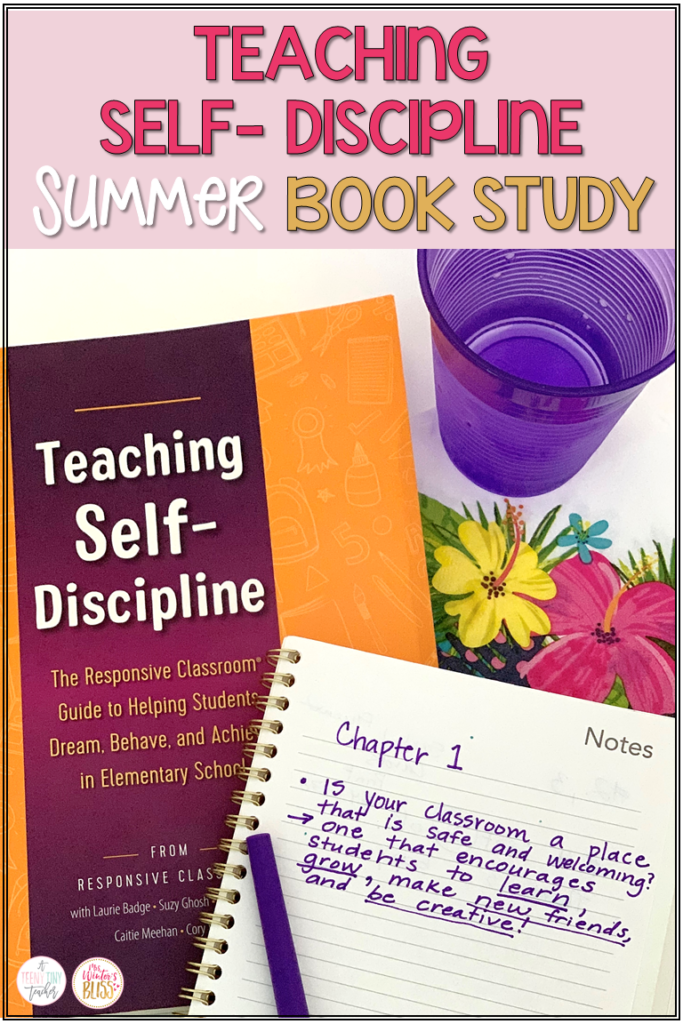
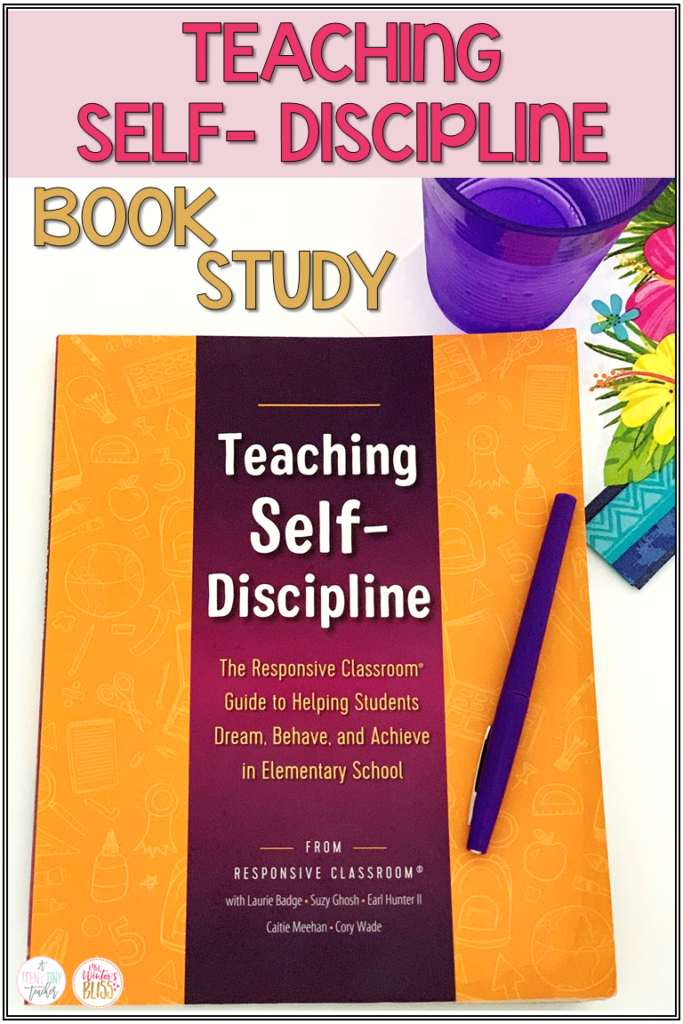
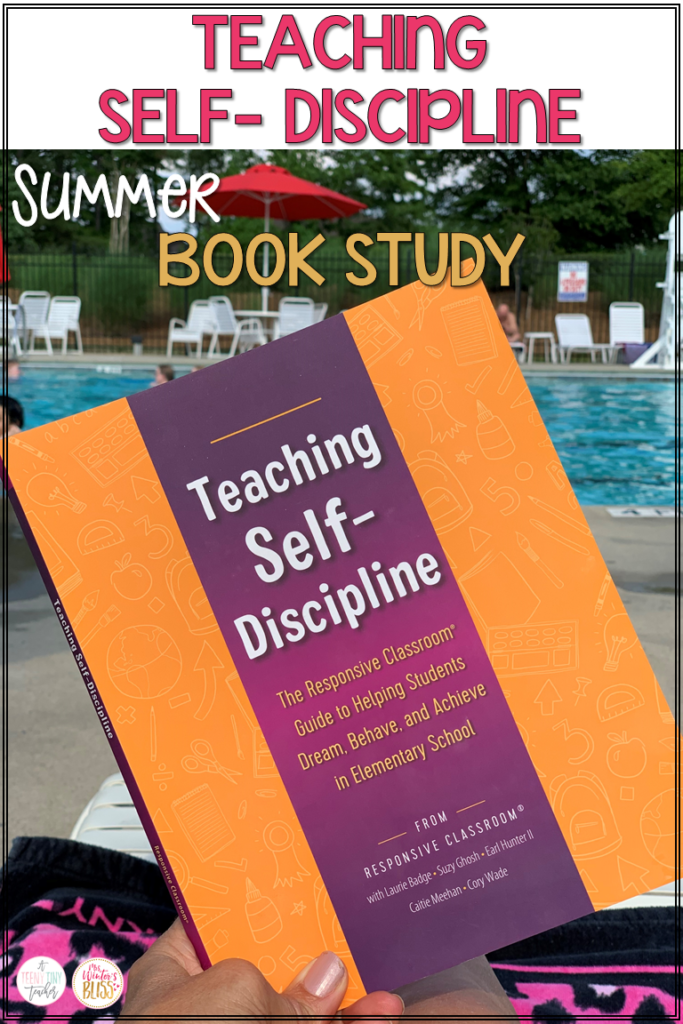
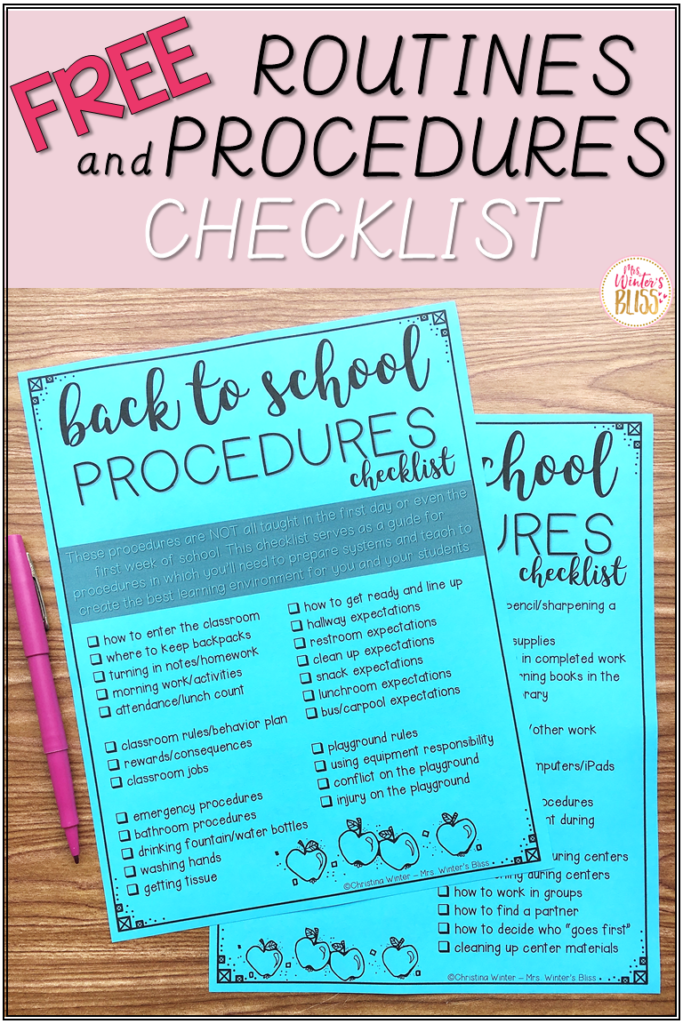

Professional book study for teachers! Make classroom management easy with actionable strategies and tips from the book Teaching Self Discipline.
Hi Friend!
Summer is officially here! I hope you’ve had some time to unwind, relax and spend time doing things you enjoy! I also hope you’ve had the chance to grab yourself a copy of Teaching Self-Discipline: The Responsive Classroom Guide to helping Students Dream, Behave and Achieve in Elementary School, so you can participate in my summer book study!
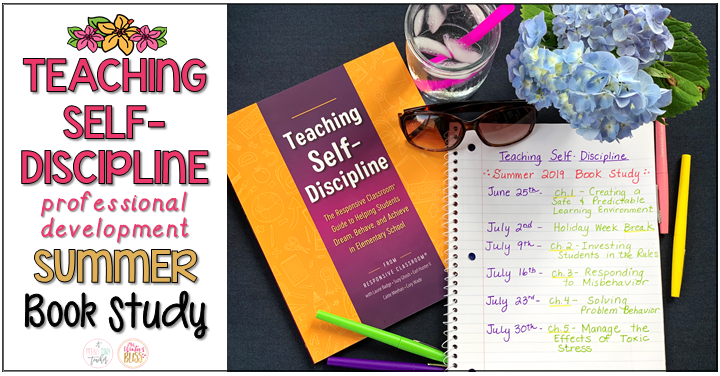
In my last post I introduced you to the text and gave you a brief overview of how this book study will be organized. Today I am excited to jump right in and begin discussing Chapter 1: Creating Safe and Predictable Learning Environment.
Below I have added the fun Facebook live chapter recap in case you missed it or want to come back to it again!
This chapter focuses on the start of the school year and how to send the message that your classroom is a place where respect, kindness and learning prevail.
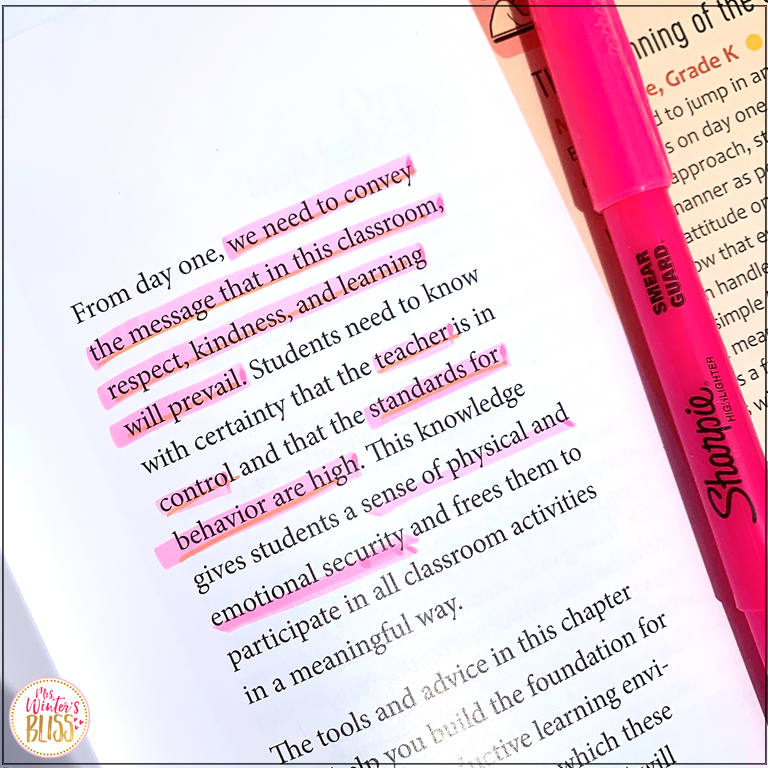
Split into three sections, it highlights the importance of organization in the classroom, the use of positive teacher language, and how to teach and model routines and procedures.
Organizing the Classroom For Success
First impressions matter! When students enter your classroom for the first time you want them to feel safe and welcome, and know you encourage learning, friendship, growth and creativity.
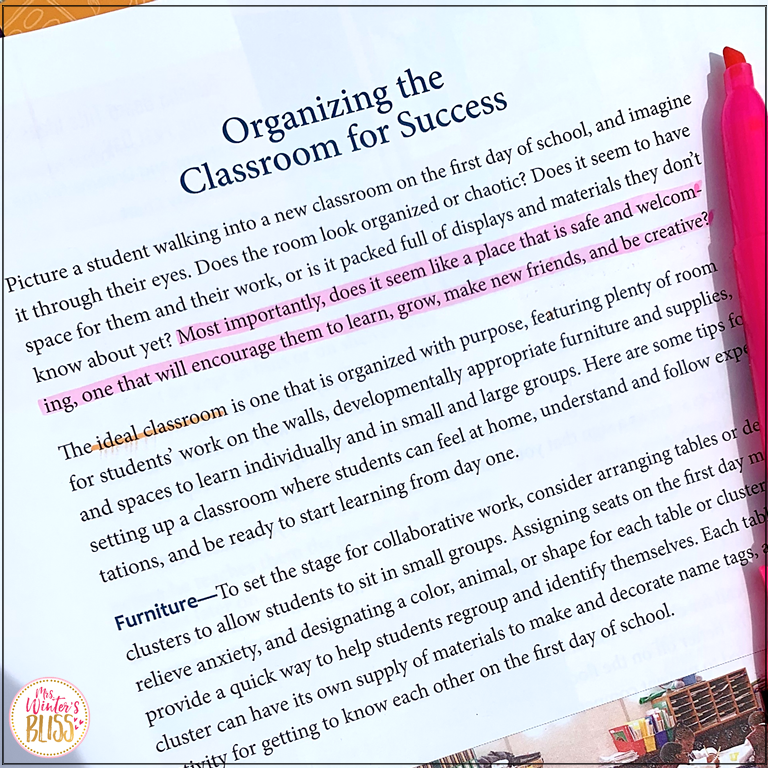
This type of environment doesn’t happen on its own. Rather, it’s something that takes a lot of consideration and thought. The first part of this chapter provides tips for how to organize your classroom to ensure students to feel at home, understand and follow expectations and are ready to learn starting from day one!
First consider furniture…to support students in collaborative work you’ll want to arrange tables and desks in ways that allow students to work in small groups. I always spend time thinking about how to arrange the clusters to ensure optimal flow throughout the classroom. We move around a lot and things can get tight quickly! In addition, giving each group a team name (color, animal, shape, etc) will make transitioning and regrouping easier for all.
As for classroom walls, the book recommends trying to strike a balance between bare and overwhelming. They suggest keeping most walls and bulletin boards blank, but giving them titles and attractive borders that serve will serve a sign of what is to come.
Do you have any favorite beginning of the year bulletin board titles? In the past I’ve created a simple “First Grade Faces” board that we filled with beginning of the year self portraits. I really like the suggested bulletin board idea “Our Hopes and Dreams for the Year” as a way to convey to students that what they care about matters at school.
As you know, you and your students will spend a lot of time gathering in the meeting area! Whether it be for a mini-lesson, a read aloud, class activity or discussion, it needs to be a space where all are seen and heard.
Depending on the size of my class, some years I’ve had to add a few chairs behind the students seated on the rug to make our circle a little more spacious and comfortable for everyone.
Then there are classroom supplies…Keeping them organized is so important and if it’s not done well can quickly become a huge headache! The book suggests keeping supplies out of reach until it is time to introduce them and you can teach students how to properly use them. While having a fresh set of supplies out on each table for the first day of school may look cute, it doesn’t go well- I learned this the hard way! Students need to be explicitly taught to properly use and take care of the supplies you give them. Supplies that are rarely used can be stored out of sight and those that will be used often but not on Day 1 can be kept in bins with a sign that says “Coming Attraction!”
For more information about setting up your classroom, check out my post on launching literacy centers where I dive deeper into optimizing classroom space and organizing materials in easy and effective ways.
Using Positive Teacher Language
Along with the physical organization of the room, the language we choose to use with our students also plays a role in creating a safe predictable learning environment. The text discusses the importance of using positive teacher language to support and encourage students.
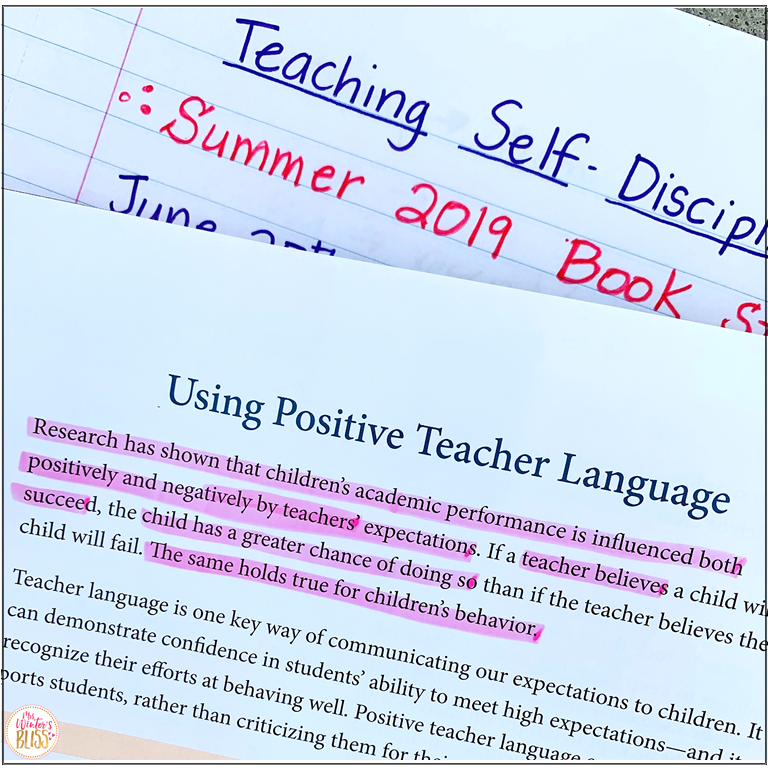
Positive language includes the following:
Envisioning language which offers a view of what they are capable of achieving. For example, referring to them as “readers” or “scientists” to help them identify as a successful learning. It also emphasizes being very clear and concrete with your expectations. So instead of saying, “we should be respectful listeners at the assembly,” you would want to say “we will have quiet mouths and eyes on the speaker so all can enjoy the presentation.”
Reinforcing language which names and affirms positive behaviors. It helps students know exactly what they are doing well. I’ve shared a lot about this type of language in a previous post on the importance of providing process praise, which like reinforcing language, acknowledges the students effort, strategies and actions that contributed to their success. This type of language is key to helping students develop a growth mindset.
Reminding Language which can either be a question or a statement, and serves to remind students of the established expectations. It can certainly be frustrating to use reminding language over and over again, but I liked the suggestion to pause and visualize the student doing the right thing before you speak, as it will help you align your underlying beliefs with a positive view of the student.
Redirecting Language which is to be used when a students behavior needs to be stopped immediately. Don’t be afraid to be firm. It’s not the same as mean. If you mean no, then say no. Be direct and pay attention to tone and volume. Aim for a calm and neutral tone.
It takes time to change our language- time and effort. Consider where you are now… What type of language do you find yourself using most often? Once you identify your patterns you can begin to fix them. Be patient with yourself and be willing to make mistakes! I love how the book suggests that when you do make a mistake to try to fix it in the moment. Be honest with your students and let them see you as a learner who makes mistakes and works to fix them!
Teaching and Modeling Procedures and Routines
Rule #1 for a new school year….Never assume students already know what is expected of them. You must explicitly teach the procedures and routines for your classroom and school. Break down each procedure and teach it in manageable parts.
The book suggests using Interactive Modeling to teach things ranging from classroom procedures to social skills. It’s simple and direct and allows students to observe, think about and then practice a new skill. They are left knowing what the positive behavior looks like, sounds like and feels like.
Here is a closer look at what Interactive Modeling looks like in the classroom…
The text encourages us to use Interactive Modeling for a variety of procedures but focuses on signals for quiet and setting expectations for group discussions.
For signaling quiet they suggest you have 1) a visual signal that can be used in whole-group meetings, 2) an auditory signal that can be used when students are spread out in the classroom, and 3) a louder auditory signal for when students are outside. In the classroom, I like to use a quick call and response chant or a doorbell chime to gain students’ attention to stop and listen. What quiet signals do you use?
As for group discussions’ guidelines, they remind us to write them as positive statements, explaining what the students WILL do. They should be posted in the group meeting area and referred to often, especially at the start of the year.
There are so many routines and procedures to teach at the start of the year! It can sometimes feel overwhelming, but to help keep you organized here is the beginning of year procedures checklist that can be used as a guide.

Note: I DO NOT teach all of these procedures in the first day or even the first week! This checklist serves as a guide for procedures that you’ll need to prepare systems for and explicitly teach to help create the best learning environment for you and your students.
Download your free Back to School Procedures checklist here
Would you add anything to the list? What other procedures you think Interactive Modeling could help teach?
What was your big takeaway from the first chapter? I’d love for you to share your thoughts, ideas and questions in the comments!
Next week is the 4th of July so we’ll take a break from the study. I hope you’ll spend time making memories with friends and family! Be back on the lookout for a new post the following week (July 9th) where we’ll dive into Chapter 2 which focuses on how we get our students to invest in the rules we set.









